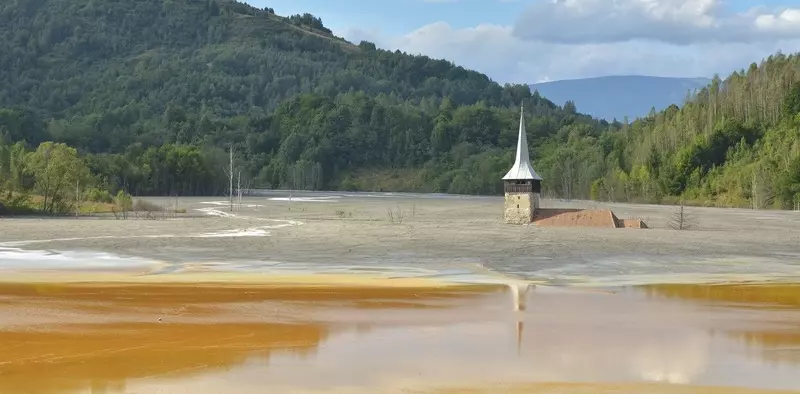[Originally published as part of The Noachian Deluge: Does Scripture Say Global, or Local?]
Scriptural Inconsistencies on the Local View
It seems clear the Bible is meaning to teach a global event; but what happens when pressing some of these passages into service for a local view?
We’ll now further examine some biblical data to consider if the local view can stand up to scrutiny.
First, we find an inconsistent quantity of humans and animals.
And the waters prevailed, and were increased greatly upon the earth; and the ark went upon the face of the waters. And the waters prevailed exceedingly upon the earth; and all the high hills, that were under the whole heaven, were covered. Fifteen cubits upward did the waters prevail; and the mountains were covered.
And all flesh died that moved upon the earth, both of fowl, and of cattle, and of beast, and of every creeping thing that creepeth upon the earth, and every man: All in whose nostrils was the breath of life, of all that was in the dry land, died.
And every living substance was destroyed which was upon the face of the ground, both man, and cattle, and the creeping things, and the fowl of the heaven; and they were destroyed from the earth: and Noah only remained alive, and they that were with him in the ark. (Emphasis mine.) Genesis 7:17-23
Notice how extensively this passage uses words such as “all” and “every.” It is obvious this references both humans and animals, and in fact, these categories are explicitly mentioned. However, an uncomfortable problem arises for the Christian who wants to claim that all humans died (save Noah and family).
For if this is only a local flood, the text cannot be talking about all animal life. We must force some other interpretation on the text, say, that only the animals which God intended to save were on the Ark. But the text does not say that, and why should we think it, considering we agree that literally all humans died? In order to make this work, we’d have to submit that the author used the word “all” in two fundamentally different ways not only in the same context, but in the very same verses!
It seems the only rational escape from such a view the Old Earth believer could appeal to would be to assert—along with evolutionary interpreters—that not all humans actually died. But this makes a mockery of the text. If we say that all humans died, we must logically conclude that all animals died as well. But if all animals died, it’s impossible that this flood was local.
The second inconsistency we find is the unfortunate practice of one using poetic passages to interpret historical passages.
Commentators throughout the millennia have agreed that the flood narrative was intended to be a historical account. This has been contested by some modern liberal and evangelical scholars, but not on the basis of any new information.5
For example, many have attempted to discredit the global flood interpretation using an appeal to Psalm 104:6-9. It reads as follows:
Thou coveredst it with the deep as with a garment: the waters stood above the mountains. At thy rebuke they fled; at the voice of thy thunder they hasted away. They go up by the mountains; they go down by the valleys unto the place which thou hast founded for them.
Thou hast set a bound that they may not pass over; that they turn not again to cover the earth.
Many have referred to this passage as a rendering of the creation account, because it appears to have elements that parallel Genesis 1. This is fair; however, one must also consider elements (particular those starting at verse six) which seem to more accurately depict the flood account rather than the creation event. The person who wishes to pine for a local flood may claim that verse nine specifically precludes this notion with the phrase “that they turn not again to cover the earth.” Actually, in a recent paper, Barrick argues convincingly for the “flood interpretation” of this passage, but the Bible itself seems to offer the solution.
Above we saw language from Genesis 7 which seems to strongly suggest a global flood interpretation. Following the tumultuous deluge, the Lord establishes the following covenant with Noah in chapter eight:
And Noah builded an altar unto the Lord; and took of every clean beast, and of every clean fowl, and offered burnt offerings on the altar. And the Lord smelled a sweet savour; and the Lord said in his heart, I will not again curse the ground any more for man’s sake; for the imagination of man’s heart is evil from his youth; neither will I again smite any more every thing living, as I have done. While the earth remaineth, seedtime and harvest, and cold and heat, and summer and winter, and day and night shall not cease. Genesis 8:20-22
The logical conclusion here is that God will never send another global deluge capable of destroying all life.
Now, the claim of the poetic interpreter is that Psalm 104:9 says the creation waters would never again cover the earth, precluding the notion of a global flood. But the only way to make this work is to interpret the clear meaning of the historical passage based on a spurious reading of the poetic one!
Of course, to expose the error in this reasoning one must look no further than Scripture, which is always its own best interpreter. Speaking through the prophet Isaiah, the Lord himself, with crystal clarity, clears up any confusion:
For this is as the waters of Noah unto me: for as I have sworn that the waters of Noah should no more go over the earth; so have I sworn that I would not be wroth with thee, nor rebuke thee. Isaiah 54:9
Therefore, the Bible makes clear which “waters” are associated with God’s covenant to never again flood the earth. This could be contrasted with Proverbs 8:29, which does seem to be teaching about the waters at the time of creation. These waters do, in fact, “stay put” under the commandment of God—but there is nothing stopping God from manipulating these waters with a new commandment. This is a clear example of how we certainly can use a poetic passage to bolster our understanding of a historical one, while at the same time realizing that magisterial weight should be placed on the historical account if we’re to arrive at the proper interpretation.
Third, I find the size of the Ark to be inconsistent on the local view
One must wonder what the point was of having Noah build a vessel capable of supporting thousands of animals if the flood were only local. The majority of current creationist thought on the Genesis “kinds” is that there may have been as few as 2,000 actual animals on the Ark, even though some creationists hold this number might be closer to 7,000.
Nevertheless, Woodmorrappe uncovered the following:
According to the Bible, the ark had three decks (floors). It is not difficult to show that there was plenty of room for 16,000 animals, assuming they required approximately the same floor space as animals in typical farm enclosures and laboratories today. The vast majority of the creatures (birds, reptiles, and mammals) are small. The largest animals were probably only a few hundred pounds of body weight.
It is still necessary to take account of the floor spaces required by large animals, such as elephants, giraffes, rhinos, and some dinosaurs. But even these, collectively, do not require a large area. God would likely have sent to Noah young (and therefore small, but not newborn) representatives of these kinds so that they would have a full reproductive potential for life after the Flood to repopulate the earth (Genesis 7:1–3). Even the largest dinosaurs were relatively small when only a few years old.
Without tiering of cages, only 47 percent of the ark floor would have been necessary. What’s more, many could have been housed in groups, which would have further reduced the required space.
What about the provisions for the animals? It can be shown that the food would have filled only 6 to 12 percent of the volume of the ark, and the potable water only an additional 9 percent of the same.
Common sense requires us to ask why Noah build a boat capable of housing so many animals, especially if the animals which needed to be on the ark were those arbitrarily considered “important” by God (a necessity of the local view). Certainly, we don’t want to say that every kind was represented in the Mesopotamian Valley! Noah could have gotten by with a much smaller vessel were the goal to only save Noah’s family and the representatives needed to repopulate the locally flooded region.
Fourth, we must consider the special word for the flood of Noah, Mabbuwl
There are many Hebrew words which could be used to describe a local flooding event, a few of which even appear in Scripture.
On this point Lisle and Chaffey write:
Our English word “flood” translates several different Hebrew words. However, whenever the flood of Noah’s day is described, it uses the word mabbuwl (מבול). This word occurs 13 times in the Old Testament, and every time it appears it refers specifically to the Genesis flood. The Hebrew language has other words, such as nachal (נחל) or mayim (מים), to describe the kinds of local floods we see today. It is as if the Hebrew writers were making it very clear that the flood of Noah’s day was entirely unique.
This is not an argument per se, but it’s a significant point worth noting. The biblical writers obviously see a need to refer to this flood as a unique event, and if that was their goal, they seemed to have accomplished it perfectly.
The above list is nowhere near exhaustive but gives definitive evidence that Scripture must be inconsistent for the local flood view to stand.
Footnote
5. See Oswalt’s The Bible Among the Myths for more on this theme.







